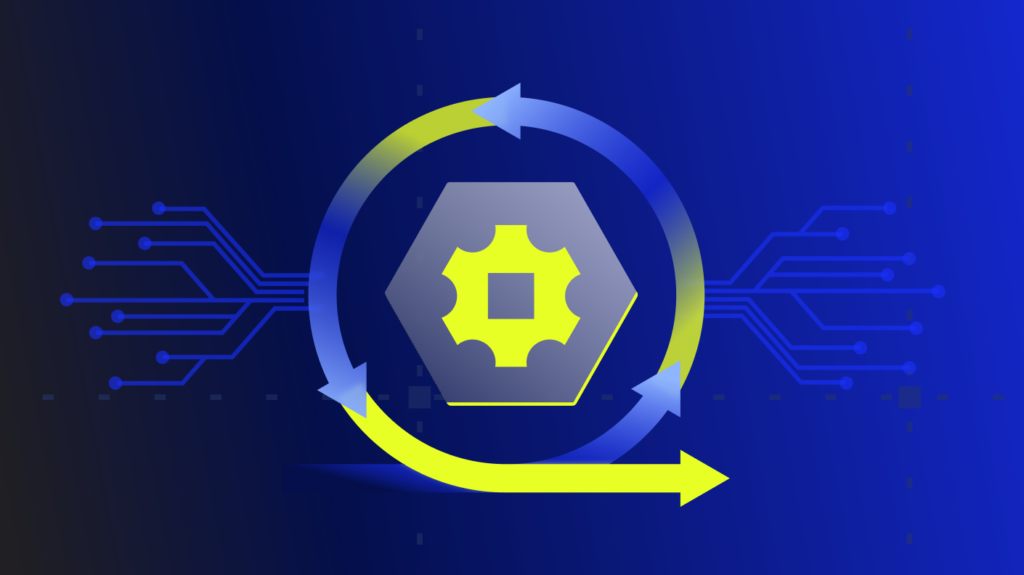Modern businesses are constantly looking for more efficiency and better performance in their daily operations. This is why embracing cloud computing has become necessary for many businesses. However, while there are numerous benefits to utilizing cloud technology, obstacles can get in the way.
Managing a cloud environment can quickly overwhelm organizations with new complexities. Internal teams need to invest substantial time and effort in regularly checking and monitoring cloud services, identifying and resolving issues, and ensuring optimal system performance.
This is where the power of serverless computing becomes evident. By using platforms like Amazon Web Services (AWS) Lambda, businesses can free themselves from worrying about the technical aspects of their cloud applications. This allows them to prioritize the excellence of their products and ensure a seamless experience for their customers without any unnecessary distractions.
What is Serverless Computing, and Why is it Important?
Serverless computing is an innovative cloud computing execution model that relieves developers from the burden of server management. This doesn’t mean that there are no servers involved. Rather, the server and infrastructure responsibilities are shifted from the developer to the cloud provider. Developers can focus solely on writing code while the cloud provider automatically scales the application, allocates resources, and manages server infrastructure.
The Importance of Serverless Computing
So why is serverless computing gaining such traction? Here are a few reasons:
- Focus on Core Product: Serverless computing allows developers to concentrate on their main product instead of managing and operating servers or runtimes in the cloud or on-premises. This can lead to more efficient coding, faster time to market, and better use of resources.
- Cost-Effective: With serverless computing, you only pay for the computing time you consume. There is no charge when your code is not running. This can result in significant cost savings compared to the traditional model of reserving a fixed amount of bandwidth or number of servers.
- Scalability: Serverless computing is designed to scale automatically. The system accommodates larger loads by simply running the function on multiple instances. This means businesses can grow and adapt quickly to changes without worrying about capacity planning.
- Reduced Latency: Serverless computing can reduce latency by allowing you to run code closer to the end user. You don’t have to send requests to a home server; instead, you can deploy functions in multiple geographic locations.
What is AWS Lambda?
Lambda is a serverless computing service that allows developers to run their code without having to provision or manage servers.
The service operates based on event-driven programming, executing functions in response to specific events. These events can range from changes in data within AWS services, updates from DynamoDB tables, and custom events from applications to HTTP requests from APIs.
AWS Lambda’s key features include:
- Autoscaling: AWS Lambda automatically scales your functions in response to the workload.
- Versioning and Aliasing: You can deploy different versions of your functions and use aliases for production, staging, and testing.
- Security: AWS Lambda ensures your code is always secure and encrypted.
How Does AWS Lambda Work?
AWS Lambda operates on an event-driven model. Essentially, developers write code for a Lambda function, which is a self-contained piece of logic, and then set up specific events to trigger the execution of that function.
The events that can trigger a Lambda function are incredibly diverse. They can be anything from a user clicking on a website, a change in data within an AWS S3 bucket, or updates from a DynamoDB table to an HTTP request from a mobile app using Amazon API Gateway. AWS Lambda can also poll resources in other services that do not inherently generate events.
When one of these triggering events occurs, AWS Lambda executes the function. Each function includes your runtime specifications (like Node.js or Python), the function code, and any associated dependencies. The code runs in a stateless compute container that AWS Lambda itself completely manages. This means that AWS Lambda takes care of all the capacity, scaling, patching, and administration of the infrastructure, allowing developers to focus solely on their code.
Lambda functions are stateless, with no affinity to the underlying infrastructure. This enables AWS Lambda to rapidly launch as many copies of the function as needed to scale to the rate of incoming events.
After the execution of the function, AWS Lambda automatically monitors metrics through Amazon CloudWatch. It provides real-time metrics such as total requests, error rates, and function-level concurrency usage, enabling you to track the health of your Lambda functions.
AWS Lambda’s Role in Serverless Architecture
AWS Lambda plays a pivotal role in serverless architecture. This architecture model has transformed how developers build and run applications, largely due to services like AWS Lambda.
Serverless architecture refers to applications that significantly depend on third-party services (known as Backend as a Service or “BaaS”) or on custom code that’s run in ephemeral containers (Function as a Service or “FaaS”). AWS Lambda falls into the latter category.
AWS Lambda eliminates the need for developers to manage servers in a serverless architecture. Instead, developers can focus on writing code while AWS handles all the underlying infrastructure.
One of the key benefits of AWS Lambda in serverless architecture is automatic scaling. AWS Lambda can handle a few requests per day to thousands per second. It automatically scales the application in response to the incoming request traffic, relieving the developer from the task of capacity planning.
Another benefit is cost efficiency. With AWS Lambda, you are only billed for your computing time. There is no charge when your code isn’t running. This contrasts with traditional cloud models, where you pay for provisioned capacity, whether or not you utilize it.
What is AWS CloudWatch
CloudWatch is a monitoring and observability service available through AWS. It is designed to provide comprehensive visibility into your applications, systems, and services that run on AWS and on-premises servers.
CloudWatch consolidates logs, metrics, and events to provide a comprehensive overview of your AWS resources, applications, and services. With this unified view, you can seamlessly monitor and respond to environmental changes, ultimately enhancing system-wide performance and optimizing resources.
A key feature of CloudWatch is its ability to set high-resolution alarms, query log data, and take automated actions, all within the same console. This means you can gain system-wide visibility into resource utilization, application performance, and operational health, enabling you to react promptly to keep your applications running smoothly.
How Lambda and CloudWatch Work Together
AWS Lambda and CloudWatch work closely to provide visibility into your functions’ performance.
CloudWatch offers valuable insights into the performance of your functions, including execution frequency, request latency, error rates, memory usage, throttling occurrences, and other essential metrics. It allows you to create dynamic dashboards that display these metrics over time and trigger alarms when specific thresholds are exceeded.
AWS Lambda also writes log information into CloudWatch Logs, providing visibility into the execution of your functions. These logs are stored and monitored independently from the underlying infrastructure, so you can access them even if a function fails or is terminated. This simplifies debugging.
By combining the power of CloudWatch with AWS Lambda, developers can gain comprehensive visibility into their serverless application’s performance and quickly identify and respond to any issues that may arise.
A Better Way to Monitor Lambda
While CloudWatch is a useful tool for monitoring Lambda functions, it can sometimes lack in-depth insights and contextual information, which can hinder troubleshooting efficiency.
LogicMonitor is an advanced monitoring platform that integrates with your AWS services. It provides a detailed analysis of the performance of your Lambda functions. With its ability to monitor and manage various IT infrastructures, LogicMonitor ensures a seamless user experience, overseeing servers, storage, networks, and applications without requiring your direct involvement.
So whether you’re using Lambda functions to power a serverless application or as part of your overall IT infrastructure, LogicMonitor can provide comprehensive monitoring for all your cloud services and give you the extra detail you need to maximize performance and optimize your cost savings.
Further reading
Multi-Cloud Monitoring with LogicMonitor
See how we can level up your cloud monitoring now with a demo of LogicMonitor’s cloud monitoring platform.
Subscribe to our blog
Get articles like this delivered straight to your inbox







